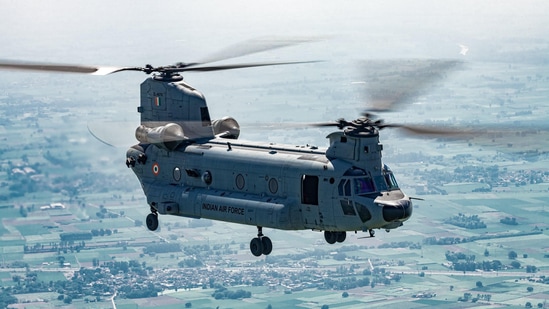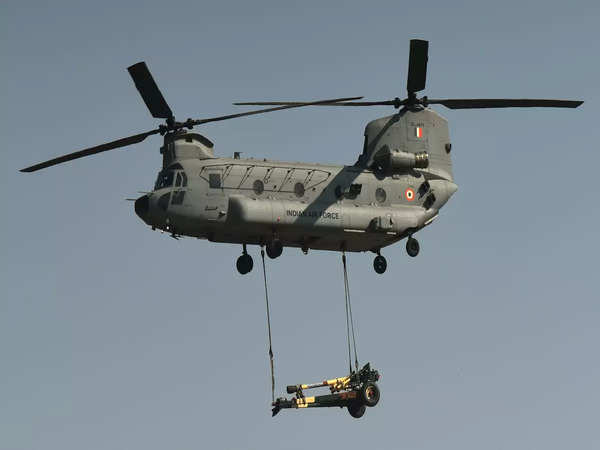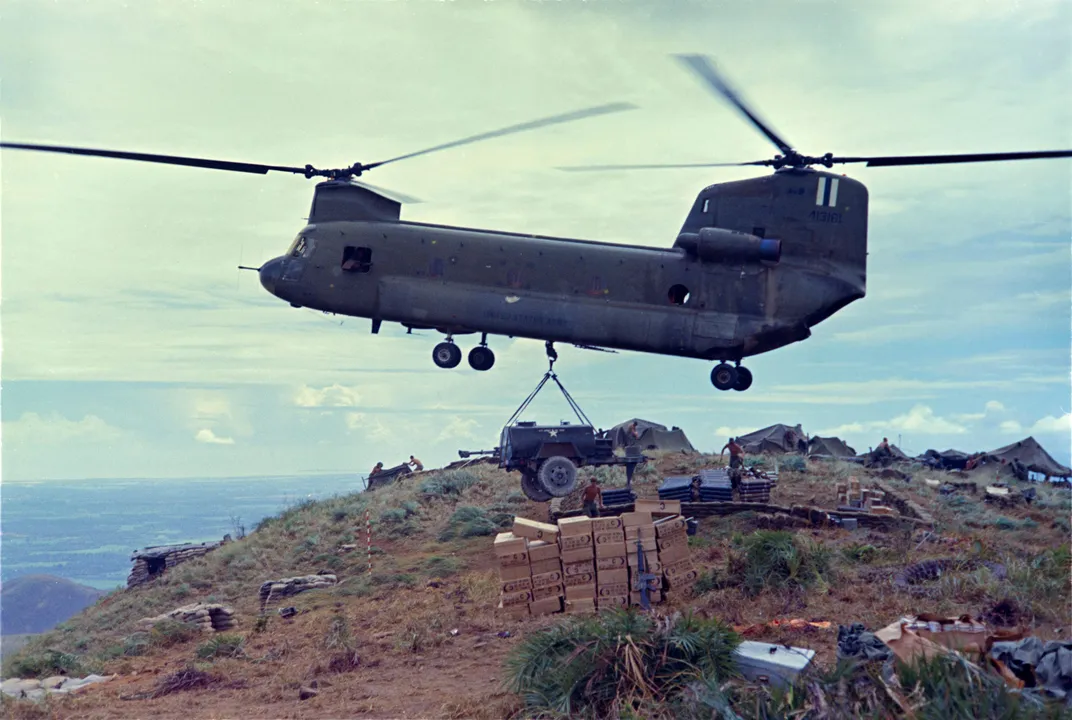Through more than 58 years of peace and war, the Boeing Vertol CH-47 Chinook has performed as a modern army’s lifeline, a status even its builders couldn’t have envisioned when it first took to the sky in 1961.
/https://tf-cmsv2-smithsonianmag-media.s3.amazonaws.com/filer/4a/6f/4a6f2dec-9589-4111-ba88-126a0f777f1d/04a_sep2019_loadslinghummertrailer_live.jpg)
The helicopter’s first combat experience came in 1965, when the aircraft carrier USS Boxer arrived in Vietnam with 57 CH-47As below its deck, and wherever U.S. (and many foreign) armies have been since, the Chinook has followed. With powerful engines and tandem rotors, the Chinook has hauled everything from combat troops to heavy artillery to boats, and has flown rescue as well as transport missions. These stories, told by the people who flew and crewed them and by those they served, illustrate why the U.S. Army plans to employ the Chinook until 2060, making it an airframe that will have lasted for nearly a century of service.
Medevac in the MistGary Roush, Pilot, CH-47A
You could see Nui Ba Den [Black Virgin Mountain] for over 100 miles from every direction. It was the most prominent feature in the III Corps [Mekong Delta] region. The U.S. owned the top of it, and the Viet Cong owned the rest of it—so the only way to get supplies up to the troops on the summit was to bring them in on Chinooks, which could lift a lot more and fly at high altitude far better than any other helicopter. One of the greatest challenges of the mission—outside of the altitude—was the small landing zone with radio towers near it. The other was the weather, particularly in August and September, during the monsoon. Despite the risks, I liked the mission to Nui Ba Den, so I always volunteered to go. My unit flew supplies to the top of the mountain nearly every day. None of the flights were really routine, but one was a real standout.

Hundreds of Viet Cong attacked the American base at the top of Nui Ba Den early on August 18, 1968, breaking over the perimeter fence with the intention of destroying the crucial communications infrastructure there. A few hours later, the little base was covered with fifteen dead enemy fighters, and the rest of the group was fleeing. In the Viet Cong attack, eight Americans died and 23 were injured. The top of the mountain was enveloped in mist due to the active monsoon. Due to the circumstances, Dustoff Hueys—which are used for medical evacuation—tried but failed to reach the injured. Because a single Chinook could carry all 23 wounded, as opposed to many Hueys, the ground commander begged us to try.

We were prepared to quit up after several failed tries because the visibility was so low. Then one of the crew proposed the plan of descending to the foot of the clouds and “hovering up,” with the crew ensuring that we were just over the treetops. We descended perhaps 1,500 feet below the helipad. We carefully ascended back up the mountain to the helipad with the enemy undoubtedly all around us. We sat down and had a look around; it was like being in a creepy movie. The mist was being whipped around by our rotors, and there were dead enemies lying around everywhere.
The ground guys immediately loaded all 23 injured, and then we ascended back into the sky, did a 180-degree turn, flew off in zero-visibility till I was sure I was clear of everything, then descended. I never reported the mission as I thought I’d get court-martialed for putting so many at such extreme risk.
/https://tf-cmsv2-smithsonianmag-media.s3.amazonaws.com/filer/48/b2/48b2820d-83db-4da7-a6c6-8864094f3da4/04h_sep2019_loadslingformationdf-st-85-10549_live.jpg)

Beer, Bullets, Beans, and Beyond
John Such, Pilot, CH-47AI always thought that the Chinook was the best, most versatile helicopter in the military—and over the decades I flew all types of helicopters. We really saw the versatility of the Chinook in Vietnam. We hauled everything: troops, supplies, even bulldozers, and we also did [medical evacuations]. The Army even converted four Chinooks to gunships, the ACH-47s.

In Vietnam, I served in I Corps, in the north. We flew all day long, typically from six in the morning until around seven at night, and there was always the possibility of going out again and doing flare drops at night. Our mission day usually started by moving a battery of 105mm howitzers. We’d move a battery from one hilltop to another hilltop. We’d sling the howitzer beneath the Chinook with its ammo bag, and the gun crew inside the aircraft. Then we’d bring them food, more ammunition, generators, diesel fuel, and water. With the move complete, we’d go into general resupply for everyone else in the area, flying anything and everything to anyone who needed it. We called it “beer, bullets, and beans.” With that done, with fuel burned down, we’d go into more specialized movements of really heavy loads like the 155mm howitzer. We could only lift that with a lot of fuel burned down. The heaviest loads we typically carried were bulldozers, which we could only lift if we were just about out of fuel. We’d latch onto the bulldozer, fly it to its location, then immediately fly to the closest refueling location as we were flying on vapors at that point.



Soucre: smithsonianmag.com








